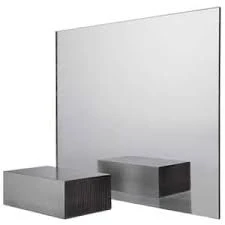

Understanding Dual Low-E Glass The Smart Choice for Modern Windows
In the quest for energy efficiency and sustainability, dual low-emissivity (Low-E) glass has emerged as a transformative building material, particularly for windows. This advanced glass technology plays a crucial role in enhancing the performance of window systems, providing significant benefits in energy conservation, comfort, and aesthetics.
What is Dual Low-E Glass?
Dual Low-E glass is a type of insulating glass that features two low-emissivity coatings. These coatings are thin layers of metal or metallic oxide applied to the glass surface, designed to reduce the amount of infrared and ultraviolet light that enters or escapes through the glass without compromising the visible light that passes through. The term dual refers to the presence of two separate coatings, which enhances the glass’s ability to reflect heat back to its source—either keeping it indoors during winter or blocking it from entering during summer.
Energy Efficiency
The primary advantage of dual Low-E glass lies in its energy efficiency. Homes and buildings equipped with this type of glass can experience substantial reductions in heating and cooling costs. By minimizing heat transfer, dual Low-E glass helps maintain a stable indoor temperature. This is particularly beneficial in regions with extreme seasonal variations. According to studies, the use of dual Low-E glass can reduce energy consumption by up to 30-50% compared to traditional single-pane windows. This not only contributes to lower utility bills but also reduces the overall carbon footprint of a building.
Comfort and Aesthetics
In addition to its energy-saving attributes, dual Low-E glass enhances the comfort of indoor spaces. It minimizes temperature fluctuations near windows, reducing cold drafts in winter and unwanted heat gain in summer. This creates a more pleasant living environment, increasing overall satisfaction for occupants.

From an aesthetic perspective, dual Low-E glass remains clear and unobstructed, allowing ample natural light to penetrate while filtering out harmful UV rays. This means that furniture, flooring, and artwork are protected from fading, maintaining the interior's beauty over time. Additionally, because dual Low-E glass can be used in various coatings and frame designs, it can seamlessly fit into the architectural vision of any building, heightening its visual appeal.
Environmental Impact
With growing concerns about climate change, the demand for environmentally friendly building materials has surged. The use of dual Low-E glass is an effective way to contribute to sustainable building practices. By lowering energy consumption, this glass technology reduces greenhouse gas emissions associated with heating and cooling systems. Moreover, many manufacturers now offer dual Low-E glass that is produced with eco-friendly processes, further diminishing its environmental impact.
Installation and Maintenance
To reap the benefits of dual Low-E glass, it is essential to ensure proper installation. Working with experienced professionals will ensure that the glass is fitted correctly within the window frames and that any potential air leaks are sealed. While dual Low-E glass generally requires minimal maintenance, regular cleaning using non-abrasive materials will help maintain its clarity and performance.
Conclusion
In summary, dual Low-E glass represents an innovative solution to modern energy efficiency and aesthetic needs. With its ability to significantly reduce energy costs, enhance indoor comfort, and contribute to environmental sustainability, this advanced glazing option serves as an intelligent choice for homeowners and builders alike. As more individuals seek to create energy-efficient spaces, the adoption of dual Low-E glass will likely continue to rise, reflecting a broader commitment to sustainability in architecture and design. Choosing dual Low-E glass is not just a practical decision; it’s a step toward a more sustainable future.